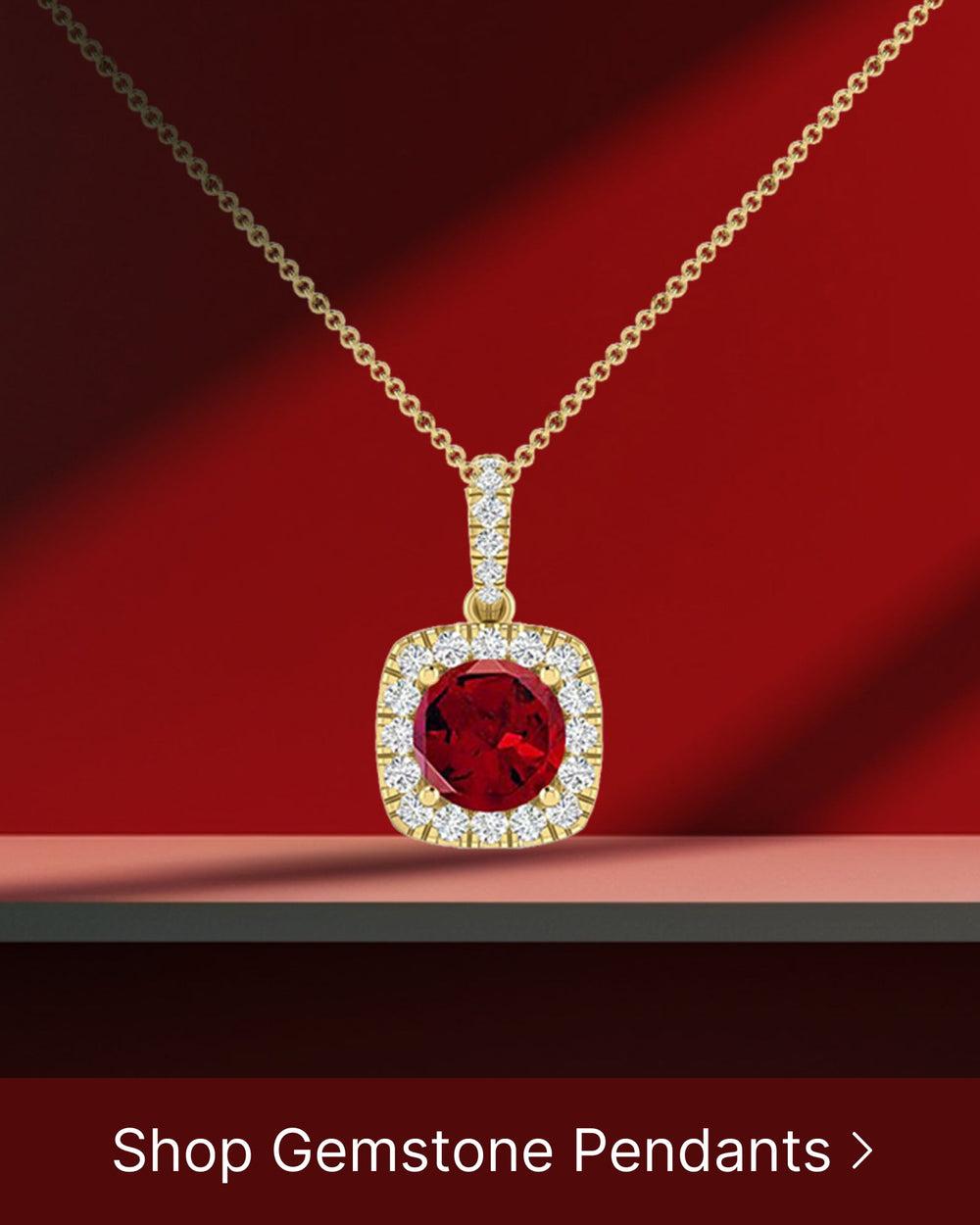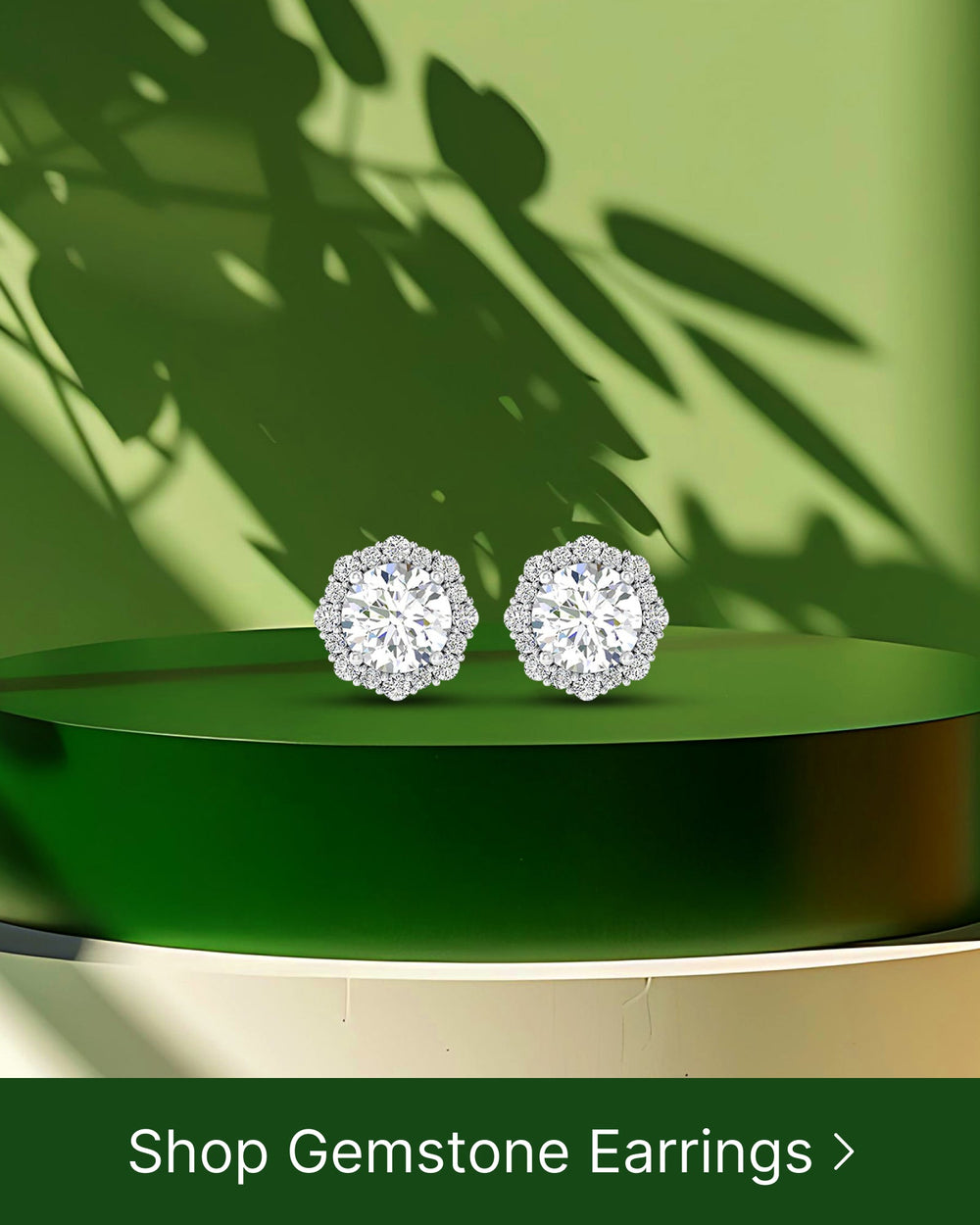The Science Behind Moonstone's Radiance
Moonstone is a gemstone that has captivated humanity for centuries with its ethereal glow. This article aims to explore the science behind the radiance of moonstone and shed light on the unique properties that make it so mesmerizing.
Understanding the Unique Properties of Moonstone
Moonstone possesses a fascinating combination of mineral composition and optical phenomenon that contribute to its radiant appearance.
When exploring the world of gemstones, moonstone stands out with its enchanting beauty and mystical allure. This gemstone, with its ethereal glow, has captivated humans for centuries.
The Mineral Composition of Moonstone
Moonstone belongs to the feldspar group of minerals, specifically orthoclase and albite. This composition gives it a pearly white sheen, reminiscent of moonlight.
Orthoclase, a potassium-rich mineral, forms the majority of moonstone's composition. It is responsible for the stone's hardness and durability. Albite, on the other hand, adds a touch of translucency and enhances the stone's iridescence.
As these minerals come together, they create a harmonious blend, resulting in the mesmerizing appearance of moonstone. The interplay of light and minerals within the stone gives it a unique radiance that is truly captivating.
The Optical Phenomenon of Adularescence
What truly sets moonstone apart is its adularescence, an optical phenomenon resulting from its unique internal structure. Adularescence is the captivating play of light that creates an iridescent glow when the stone is observed from different angles.
When light enters the moonstone, it encounters alternating layers of orthoclase and albite minerals. These layers act as a diffraction grating, scattering the light and creating a shimmering effect. The result is a stunning display of blue, white, and sometimes even rainbow-like colors that seem to dance across the surface of the stone.
This optical phenomenon is reminiscent of the moon's soft glow on a clear night, hence the name "moonstone." The adularescence adds an ethereal quality to the gemstone, evoking a sense of mystery and enchantment.
It is worth noting that the intensity of moonstone's adularescence can vary, with some stones exhibiting a subtle glow, while others possess a more pronounced and captivating display of colors. This natural variation only adds to the allure and uniqueness of each moonstone.
Overall, moonstone's mineral composition and optical phenomenon work in perfect harmony, creating a gemstone that is truly one-of-a-kind. Its pearly sheen and captivating adularescence make it a favorite among gemstone enthusiasts and jewelry designers alike.
The Role of Light in Moonstone's Radiance
Light plays a crucial role in enhancing the radiance of moonstone, as it interacts with the stone in fascinating ways.
Moonstone, with its ethereal glow and captivating beauty, has long been revered for its unique optical properties. The mesmerizing radiance of this gemstone is a result of its interaction with light, which takes place through a series of intricate phenomena.
The Interaction of Light with Moonstone
When light enters moonstone, it encounters microscopic layers of feldspar that act as a diffraction grating. This scattering of light causes the remarkable adularescent effect, where the light appears to shift and shimmer across the stone's surface.
Imagine holding a moonstone up to the sunlight and witnessing the enchanting play of colors that unfold before your eyes. As the light enters the gem, it is broken down into its constituent wavelengths, creating a stunning display of spectral hues. The diffraction grating effect of the feldspar layers scatters the light in various directions, giving rise to a mesmerizing dance of colors.
From iridescent blues and pinks to soft whites and silvers, the adularescent effect of moonstone is truly a sight to behold. This captivating phenomenon is a testament to the intricate interplay between light and the unique structure of the gemstone.
The Impact of Light Refraction and Reflection
In addition to diffraction, light undergoes refraction and reflection within the moonstone. These processes further enhance the stone's radiance, creating a dynamic interplay of colors that dance across the gem's surface.
As light enters the moonstone, it is refracted, or bent, due to the varying refractive indices of the gem's different layers. This bending of light rays causes them to change direction, resulting in a stunning display of colors that seem to emanate from within the stone.
Furthermore, the reflection of light within the moonstone adds an extra dimension to its radiance. As light rays bounce off the internal surfaces of the gem, they create a beautiful glow that seems to emanate from deep within the stone. This internal reflection contributes to the gem's overall brilliance and adds to its mystical allure.
The interplay of refraction, reflection, and diffraction within moonstone creates a visual spectacle that is truly captivating. Whether it is the soft glow of a moonlit night or the vibrant sparkle under the sun's rays, the radiance of moonstone is a testament to the fascinating ways in which light interacts with this extraordinary gemstone.
The Geological Formation of Moonstone
Moonstone's radiance is not solely dependent on its internal properties but is also influenced by the geological processes that govern its formation.
Understanding the geological formation of moonstone provides valuable insights into the mesmerizing beauty of this gemstone. Let's delve deeper into the process of moonstone formation and explore the influence of various geological conditions on its radiance.
The Process of Moonstone Formation
Moonstone is typically formed within igneous rocks, such as granites, as a result of cooling magma. This fascinating process takes place deep within the Earth's crust, where intense heat and pressure create the perfect conditions for the formation of this enchanting gemstone.
As magma slowly cools over an extended period, it undergoes a process known as crystallization. During this process, certain geological conditions come into play, including the presence of specific minerals and the rate of cooling, which contribute to the stone's unique adularescent glow.
One of the key factors in moonstone formation is the presence of feldspar minerals, such as orthoclase and albite. These minerals play a crucial role in creating the captivating play of light that moonstone is renowned for. As the magma cools, these feldspar minerals separate into layers, forming the characteristic schiller effect that gives moonstone its ethereal glow.
The Influence of Geological Conditions on Radiance
Variations in geological conditions have a significant impact on the radiance of moonstone. Factors such as the mineral composition of the surrounding rock, the presence of trace elements, and the rate of cooling can all influence the intensity and color play of moonstone's radiance.
For instance, moonstones found in different geological environments exhibit distinct variations in color and optical properties. Moonstones from Sri Lanka, known as Ceylon moonstones, are cherished for their bluish sheen and exceptional transparency. These stones are formed in pegmatite, a coarse-grained igneous rock, which allows for slower cooling and the development of larger feldspar crystals, enhancing the stone's radiance.
In contrast, moonstones from India, known as Indian rainbow moonstones, showcase a mesmerizing array of colors, including blue, green, and peach. These stones are formed in a different geological setting, where the presence of trace elements, such as titanium and copper, contribute to the vibrant color play.
Furthermore, the geological history of a particular region can also influence the formation of moonstone. Areas with a complex geological past, characterized by tectonic activity and metamorphism, can give rise to unique moonstone varieties with intricate patterns and a rich interplay of colors.
In conclusion, the geological formation of moonstone is a captivating process that involves the interplay of various geological conditions. From the cooling of magma to the presence of specific minerals and trace elements, each factor contributes to the enchanting radiance and unique characteristics of this extraordinary gemstone.
The Varieties of Moonstone and Their Radiance
Moonstone comes in a variety of types, each with its distinct radiance and aesthetic appeal.
Comparing the Radiance of Different Moonstone Varieties
Some moonstone varieties, such as rainbow moonstone and peach moonstone, exhibit more pronounced iridescence and color play. Others, like white moonstone, possess a subtler glow. Exploring the differences in radiance adds to the allure and appreciation of each moonstone variety.
Factors Affecting the Radiance of Moonstone Varieties
The radiance of moonstone can be influenced by several factors, including the stone's internal structure, transparency, and the presence of inclusions. Additionally, the cut and shape of the gemstone can alter how light interacts with the stone, ultimately impacting its radiance.
The Scientific Investigation of Moonstone's Radiance
Scientists have dedicated considerable efforts to understanding and unraveling the mystery behind moonstone's captivating radiance. Their research has led to significant discoveries and advancements in this field.
Research Methods in Studying Moonstone's Radiance
Researchers utilize various techniques, including spectroscopy and microscopy, to investigate the optical properties and internal structures of moonstone. These methods allow them to examine the intricate details of the stone's radiance, providing valuable insights into its formation and unique interactions with light.
Discoveries and Advances in Moonstone Research
Through their studies, scientists have uncovered fascinating facts about moonstone, including the correlation between its radiance and crystallographic orientations of feldspar. Additionally, they have identified new moonstone resources and developed techniques to enhance the stone's beauty while preserving its natural radiance.
In conclusion, the radiance of moonstone is a result of its distinctive mineral composition, the optical phenomenon of adularescence, and the interplay of light through diffraction, refraction, and reflection. Furthermore, the geological conditions of moonstone's formation and the variety of moonstone types contribute to its captivating radiance. Through the scientific investigation of moonstone, researchers have made remarkable discoveries and advancements, shedding light on the secrets of this enchanting gem.






